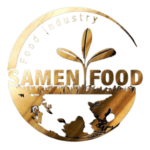Abstract:
Efficiently producing and marketing agricultural products on a large scale requires a comprehensive strategy that encompasses various aspects of farming, processing, and distribution. This article offers valuable insights into key steps and effective practices for achieving successful mass production and marketing of agricultural goods, emphasizing the importance of quality, innovation, and market responsiveness.
Introduction:
Meeting the demands of a growing population and competitive markets necessitates a systematic approach to agricultural production and marketing. This article explores essential guidelines for farmers and agribusinesses to maximize their productivity, optimize processes, and successfully bring their products to market.
Section 1: Planning for Large-Scale Production
1.1 Market Research: Thoroughly understanding consumer preferences, trends, and demands guides product selection and development.
1.2 Crop Selection and Diversification: Choosing suitable crops and diversifying products help manage risks and cater to various market segments.
1.3 Infrastructure and Resources: Adequate facilities, machinery, and skilled labor are vital for efficient large-scale production.
Section 2: Ensuring Quality and Sustainability
2.1 Good Agricultural Practices (GAP): Adhering to GAP standards ensures safe and sustainable farming methods, enhancing product quality.
2.2 Irrigation and Soil Management: Implementing efficient irrigation and soil conservation practices maintains optimal crop health and yield.
2.3 Integrated Pest Management (IPM): Employing IPM strategies minimizes pesticide usage and safeguards crop quality.
Section 3: Efficient Post-Harvest Handling and Processing
3.1 Proper Harvesting Techniques: Timely and proper harvesting reduces losses and maintains product quality.
3.2 Storage and Transportation: Effective storage and transportation facilities prevent spoilage and maintain freshness.
3.3 Value-Addition: Processing and packaging agricultural products add value and attract a wider range of consumers.
Section 4: Effective Marketing Strategies
4.1 Branding and Packaging: Attractive branding and packaging enhance product visibility and consumer appeal.
4.2 Online and Offline Presence: Utilizing digital platforms and traditional channels expands market reach and accessibility.
4.3 Targeted Marketing: Tailoring marketing efforts to specific consumer segments increases engagement and conversion rates.
Section 5: Building Strong Supply Chains
5.1 Collaboration and Partnerships: Collaborating with distributors, retailers, and local communities strengthens supply chain networks.
5.2 Quality Assurance: Maintaining consistent product quality and adhering to industry standards build trust among stakeholders.
5.3 Customer Feedback and Adaptation: Listening to customer feedback allows for continuous improvement and adaptation to changing market preferences.
Conclusion:
Achieving success in large-scale agricultural production and marketing requires a strategic and holistic approach. By combining effective planning, quality assurance, innovative marketing, and robust supply chain management, farmers and agribusinesses can navigate challenges and seize opportunities in the dynamic agricultural marketplace. Embracing these guidelines ensures not only increased profitability but also contributes to sustainable agriculture and enhanced food security.
